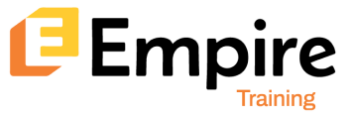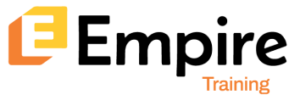Train and recruit talent using an all-in-one platform
- Free, no-obligation access.
- Rapid recruitment thanks to our pool of work-study students.
- Administrative management provided by our teams.

The most requested domains
Train where demand is high, recruit where talent is scarce.
- Management
- Project management
- Accounting
- Marketing
- PMP
- Art & Design
- IT and New Technologies
- PNL
- Quality
- Soft Skills
- Maintenance management
- Production management
- SAP
Principles of management
Introduction to basic management concepts including planning, organizing, leading and controlling.
Human resources management
Recruitment, performance management, skills development and conflict management techniques.
Leadership and Softskills
Development of leadership skills, motivation techniques and team management.
Quality management
Total Quality Management (TQM) concepts, continuous improvement tools and quality assurance.
Supply Chain Management
Basic concepts of supply chain management, logistics and operations management.
Strategic management
Analysis of the competitive environment, development of business strategies and strategic decision-making.
Principles of Project Management
Introduction to Project Management covers the project life cycle and the essential roles and responsibilities of the project manager.
Leadership and Softskills
Development of leadership skills, motivation techniques and team management.
Cost Management
The training covers budgets, financial monitoring and variance analysis to enable optimal cost management.
Planning Techniques and Tools
The training covers the use of software such as MS Project, Trello and Asana, as well as the management of projects, deadlines and deadlines.
Risk Management
The training covers risk analysis, reduction and management in order to better cope with the unexpected.
Agility and Methodologies
This training will allow you to approach Agile methods, including Scrum, and to integrate agile practices into your projects.
Basic Principles of Accounting
Introduction to Generally Accepted Accounting Principles (GAAP) and IFRS.
Financial analysis
Methods of analyzing financial statements, interpretation of financial ratios, evaluation of the financial performance of a company.
Taxation
Introduction to local tax laws and tax regulations, tax returns, calculation of income tax and VAT.
Audit
It covers the fundamental principles of financial auditing, audit methodology and applicable standards.
Accounting information systems
Use of accounting software, automation of accounting processes, management of financial data.
Commercial legislation
Mastery of local commercial laws, such as the Code of Obligations and the Commercial Code.
Digital Marketing Strategy
Using online channels helps promote products, reach a target audience and maximize engagement.
Search Engine Optimization
SEO optimization involves researching keywords and applying on-page and off-page techniques to increase a site's visibility and generate relevant traffic.
Content Marketing
Content strategies include blogging, vlogging and infographics, with a marketing focus to maximize engagement.
Social Networks
Social media marketing (Facebook, Instagram, LinkedIn, Twitter, etc.) uses community management and targeted advertising to increase visibility and engagement.
E-commerce and Marketplaces
Sell products or services online, via a dedicated store or a multi-seller platform.
Master the theoretical bases
Understand PMBOK concepts, methods and tools, such as planning techniques, risk management and cost control.
Implementing concrete concepts
Practice on practical cases and simulations representing real situations in project management.
Putting the concepts into practice
Practice solving case studies and examples reflecting real-life situations in project management.
Improve interpersonal skills
Acquire communication, leadership and team management skills, essential for success in project management.
Graphic design
Our graphic design training covers the basics, as well as Photoshop, Illustrator and InDesign software, typography, layout and branding.
Interior Design
The training covers materials, decoration, technical drawing, perspectives and the use of software such as AutoCAD and SketchUp.
Digital Art
Digital art training covers digital painting, animation, 3D modeling, as well as video game creation and interactive design.
Multimedia and visual communication
The training covers visual communication, UX/UI web design, digital marketing and the creation of multimedia materials.
Photography and Video
The training in shooting techniques covers photo editing, video editing, as well as screenwriting and visual storytelling.
Fashion Design
Clothing design training covers fashion drawing, illustration, sewing, pattern making, as well as the study of fashion trends and history.
Web and Mobile Development
Website building uses HTML, CSS, JavaScript, frameworks like React, Angular, Vue.js, and mobile development with Flutter or React Native.
Cloud Computing
Cloud Computing Fundamentals covers AWS, Azure, and Google Cloud services, as well as cloud infrastructure migration and management.
Blockchain and Cryptocurrencies
The introduction to blockchain and cryptocurrencies covers smart contracts and their multi-sector applications.
Internet of Things (IoT)
The Internet of Things covers fundamental principles and examines its applications in smart homes and industrial sectors.
Cybersecurity
The basics of cybersecurity include data protection, cryptography, ethical hacking, and penetration testing to secure systems.
Artificial Intelligence and Big Data
Our training courses are fully tailored to the specific needs of your company and your sector of activity.
Fundamentals of learning
Discover mirror neurons, early learning and observational learning.
Exploiting modeling tools
Choose the level of modeling according to the objective, using the awareness index, strategies and meta programs.
Putting modeling into practice
Use modeling to clarify the Desired State, adopt new behaviors and explore Internal States.
Assimilate the key elements of learning
Understanding assumptions, external orientation and essential similarities.
Understanding the logical levels of modeling
Understand the logical levels and their impact on the structuring of learning to achieve objectives.
Transforming beliefs and adapting skills
Change limiting beliefs and align skills to promote development.
Automation of quality processes
Using IoT and automated systems to monitor and control quality in real time.
Predictive maintenance and quality
Integrating advanced technologies to predict and avoid quality-related failures.
Big Data and Quality Analysis
Leveraging data to improve product performance and compliance.
Intelligent Supply Chain Management
Monitoring and controlling quality throughout the supply chain with connected tools.
Continuous improvement with AI
Using artificial intelligence to optimize quality processes and detect anomalies.
Communication Skills
- Effective communication techniques.
- The art of active listening.
- Managing misunderstandings and resolving conflicts.
- Communication assertive
Critical Thinking and Problem Solving
- Objective analysis of information.
- Decision making techniques.
- Collaborative problem solving.
- Risk management.
Efficiency and Productivity
- Planning and organizing.
- Setting priorities.
- Stress management and burnout prevention.
- Motivation and concentration techniques.
Emotional Intelligence
- Development of self-awareness.
- Managing emotions.
- Empathy and positive relationships.
- Emotional leadership.
Issues and Strategies
- Cost of non-maintenance.
- Today’s business issues.
- The maintenance function.
- Who should perform maintenance?
- How to do it?
- Conclusion.
Maintenance method
- Concept of failure.
- Maintenance method.
- Types of maintenance.
- Choosing a maintenance strategy
Failure analysis and diagnostic assistance
- Quantitative failure analysis.
- ABC Pareto method.
- Spearman test.
- Analysis
- Ichikawa Method
Analysis of failure modes, their effect and criticality
- Definition.
- Machine AMDEC.
- Approach and practice.
- Exercises.
- Case study.
Introduction to production management
- The context of the new production management
- Production management and flows
- Production management and financial aspect
- production management in the company
Production planning
- MRP2 – Manufacturing Resources Planning
- MRP0 – Material Requirement Planning
- Problem of losses and rejects
- How MRP works
Implementation of a production master program
- The industrial and commercial plan (PIC)
- The production master program (PDP)
Load balancing loading
- Ability
- Load
- Comparison
- Load/Capacity
Kanban Method
- Industrial system modeling
- Application to the Kanban system
- Composition of a Kanban
- The Production Scheduling Table
- Using a TOP
SAP FI/CO
Accounting, budgetary and analytical management for better financial monitoring and optimized decision-making.
SAP MM
Purchasing tracking, inventory management and logistics optimization for better control of resources.
SAP PP
Production planning and management to improve coordination and productivity.
Why choose Empire Training?

Flexible start date
Choose the start date that suits you best.

100% online
Available anywhere and at any time, whether for training or continuous recruitment.

An individual mentor
An experienced professional in the field guides your students to optimize their certification training.

Ready-to-use skills
Practical projects inspired by real-life situations to acquire skills that are directly useful in your business.
Our response to all of your challenges as an employer.
- Recruitment
- Productivity
- Change management
- Restructuring
- Attractiveness
Reach future talents by promoting diversity.
- Recruit candidates matching your needs from our pool of interns ready to be hired!
- Quickly fill hard-to-fill positions
- while shaping dynamic talents through our work-study training programs.
Improve performance through skills enhancement.
- Enable the use of tools and technologies that are constantly evolving
- Promote productivity and break down silos
- Encouraging intrapreneurs to develop their projects
Respond to the obsolescence of skills by directing people towards sought-after jobs
- Create new opportunities through internal mobility.
- Preserve know-how and experience
- Identify and support promising talents
Support your organizational transitions with our adapted solutions:
- Audit of skills and needs
- Human resources redeployment plan
- Training and retraining of impacted employees
Boost the attractiveness of your business with our services
- Enhancement of your employer brand
- Continuing training to develop the skills of your teams
- Loyalty and workplace well-being programs


